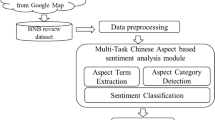Abstract
This study presents a new approach for administering point-of-view-based assessment exams. The purpose of our ranking is to gain a sense of the best and most hilariously bad works of art. Given a collection of free-text clients, a specific object reviews. Our method begins with a handcrafted match to find viewpoints, use dependency courses in individual sentences. It then congregates by combining different notifications of a same location using measure of similarity based on the Word Net. Finally, it performs an each point of view obtains a score, which contributes to the overall score. A new assessment of a client’s reaction to a social occasion it is a part of it there is no need for any of that in our ideology express a seed word or space Data, as it merely makes use of an off-the-shelf word reference for evaluation we look at what makes people interested. Perceiving and rating points from online book reviews are the outcome of groundwork. We investigate the topic’s breadth. Diverse supply tendencies management approaches based on the multi sentence verification and interexamination work assessment of the rating are presented.





Similar content being viewed by others
References
Pang B, Lee L. Opinion mining and sentiment analysis. Found Trends Inf Retr. 2008;2(1–2):1–135.
Lin Y, Zhang J, Wang X, Zhou A. An information theoretic approach to sentiment polarity classification. In: Proceedings of the 2nd joint WICOW/AIRWeb workshop on web quality, WebQuality ’12. New York: ACM; 2012. p. 35–40.
Zhou S, Chen Q, Wang X. Active deep learning method for semi-supervised sentiment classification. Neurocomputing. 2013;120:536–46. Image Feature Detection and Description.
Wilson T, Wiebe J, Hoffmann P. Recognizing contextual polarity in phrase-level sentiment analysis. In: Proceedings of the conference on human language technology and empirical methods in natural language processing. Stroudsburg: Association for Computational Linguistics; 2005. p. 347–54.
Pak A, Paroubek P. Twitter as a corpus for sentiment analysis and opinion mining. In: Proceedings of the seventh conference on international language resources and evaluation. Valletta: European Languages Resources Association; 2010.
Pang B, Lee L. A sentimental education: sentiment analysis using subjectivity summarization based on minimum cuts. In: Proceedings of the 42nd annual meeting on association for computational linguistics, ACL ’04. Stroudsburg: Association for Computational Linguistics; 2004.
Turney PD. Thumbs up or thumbs down?: semantic orientation applied to unsupervised classification of reviews. In: Proceedings of the 40th annual meeting on association for computational linguistics, ACL ’02. Stroudsburg: Association for Computational Linguistics; 2002. p. 417–24.
Whitelaw C, Garg N, Argamon S. Using appraisal groups for sentiment analysis. In: Proceedings of the 14th ACM international conference on information and knowledge management, CIKM ’05. New York: ACM; 2005. p. 625–31.
Liu B. The science of detecting fake reviews. 2014. http://content26.com/blog/bing-liu-the-science-of-detectingfakereviews/.
Jindal N, Liu B. Opinion spam and analysis. In: Proceedings of the 2008 international conference on, web search and data mining, WSDM ’08. New York: ACM; 2008. p. 219–30.
Mukherjee A, Liu B, Glance N. Spotting fake reviewer groups in consumer reviews. In: Proceedings of the 21st, international conference on world wide web, WWW ’12. New York: ACM; 2012. p. 191–200.
Stanford. Sentiment 140. 2014. http://www.sentiment140.com/.
Go A, Bhayani R, Huang L. Twitter sentiment classification using distant supervision. CS224N Project Report, Stanford; 2009. p. 1–12.
Twitter. Twitter apis. 2014. https://dev.twitter.com/start.
Sarvabhotla K, Pingali P, Varma V. Sentiment classification: a lexical similarity based approach for extracting subjectivity in documents. Inf Retr. 2011;14(3):337–53.
Zhang Y, Xiang X, Yin C, Shang L. Parallel sentiment polarity classification method with substring feature reduction. In: Trends and applications in knowledge discovery and data mining. Lecture notes in computer science, vol. 7867. Berlin: Springer; 2013. p. 121–32.
Kim S-M, Hovy E. Determining the sentiment of opinions. In: Proceedings of the 20th international conference on Computational Linguistics. Stroudsburg: Association for Computational Linguistics; 2004. p. 1367.
Yu H, Hatzivassiloglou V. Towards answering opinion questions: separating facts from opinions and identifying the polarity of opinion sentences. In: Proceedings of the 2003 conference on, empirical methods in natural language processing. Stroudsburg: Association for Computational Linguistics; 2003. pp 129–36.
Liu B, Hu M, Cheng J. Opinion observer: analyzing and comparing opinions on the web. In: Proceedings of the 14th international conference on world wide web, WWW ’05. New York: ACM; 2005. p. 342–51.
Liu B. Sentiment analysis and subjectivity. In: Handbook of natural language processing, 2nd edn. (editors: N. Indurkhya and F. J. Damerau), Boca Raton: Taylor and Francis Group; 2010.
Funding
No funding received for this research work.
Author information
Authors and Affiliations
Corresponding author
Ethics declarations
Conflict of interest
Authors declare no conflict of interest.
Additional information
Publisher's Note
Springer Nature remains neutral with regard to jurisdictional claims in published maps and institutional affiliations.
This article is part of the topical collection “Advances in Computational Intelligence, Paradigms and Applications” guest edited by Young Lee and S. Meenakshi Sundaram.
Rights and permissions
Springer Nature or its licensor (e.g. a society or other partner) holds exclusive rights to this article under a publishing agreement with the author(s) or other rightsholder(s); author self-archiving of the accepted manuscript version of this article is solely governed by the terms of such publishing agreement and applicable law.
About this article
Cite this article
Lohith, C., Chandramouli, H., Balasingam, U. et al. Aspect Oriented Sentiment Analysis on Customer Reviews on Restaurant Using the LDA and BERT Method. SN COMPUT. SCI. 4, 399 (2023). https://doi.org/10.1007/s42979-022-01634-8
Received:
Accepted:
Published:
DOI: https://doi.org/10.1007/s42979-022-01634-8




